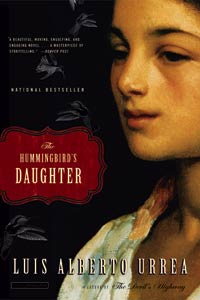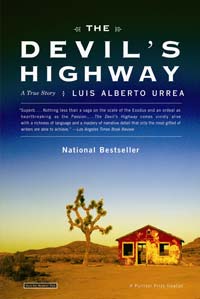Luis Alberto Urrea to Speak at S.B. Writers Conference
Writing Beyond Borders

There was a lot that made you love San Diego in the early ’90s. And then there were Luis Alberto Urrea’s essays in the Reader. His gritty accounts of border life offered a shock-and-awe contrast to the idyllic existence north of the border. In his descriptions of the dumps, orphanages, and police precincts of Tijuana, Urrea revealed the harsh reality that resided right on our doorstep even before border books came into vogue. He has since gone on to publish his expressive voice in all literary forms. His last two books-The Devil’s Highway, a real-life account of a border crossing, and the mystically intoxicating novel, The Hummingbird’s Daughter-have secured his place among the finest contemporary writers in the nation.

On Tuesday, June 24, Urrea will be a guest speaker at the 2008 Santa Barbara Writers Conference, one of the nation’s most popular conferences for established and aspiring writers. He spoke to me recently about life since San Diego.
The writings you published in San Diego’s Reader actually formed your first book, Across the Wire, but I believe its release was a long time coming. It took 10 years for somebody to publish Across the Wire. Ten years of solid rejection. After so many years of utter failure, I had essentially given up. I went off to graduate school thinking I was going to teach English for the rest of my life, but during my first semester, the book was accepted for publication.
Did the success of that book then pave the way for the sequel, By the Lake of Sleeping Children? Across the Wire made a great splash in a minor league way. Within its second week of existence, it got a huge review in the New York Times‘s Book Review, which was unexpected, and that made the first printing vanish. That opened doors for me, and I then published a book of poetry and a novel, and thought, “Wow, this is great.” Things sort of ground to a halt after that, and I was in Arizona doing research for The Hummingbird’s Daughter and completely out of funds. [By the Lake of Sleeping Children] was one of those quick deals where I had some further Reader pieces and some new stuff that looked at the Across the Wire world, post-NAFTA.

Talk me through the evolution of The Devil’s Highway. I’ve got to say that I didn’t really want to do another border book either. I thought I had exhausted the border and wanted to move on. But when I started poking around I was amazed that so many people involved wanted to talk. Once I got into the Mexican Consulate and the Border Patrol-to the people who had their hands on the corpses-they very much wanted America to know what was going on. It turned out to be a very blessed project.
What dictates whether a story is best told as fiction or nonfiction? Mostly there is a moment when the text tells you what it wants. On the other hand, The Hummingbird’s Daughter took 20 years to research and figure out. I traveled and studied archives, I sat with shamans and wandered with medicine women, and I just could not find how that story would come out. I finally had a revelation that the pinnacle of writing is the novel. And so I though if I wrote a novel, people would be able to enter this world more profoundly. There is no way a footnoted history book is going to make people dream or have vision. The closest I could get to giving people a dream was writing long-form fiction.
4•1•1
Luis Alberto Urrea will speak and sign books at the Santa Barbara Writers Conference on Tuesday, June 24, at 7:30 p.m. Admission is $20. For more information, call 964-0367 or visit sbwriters.com.



